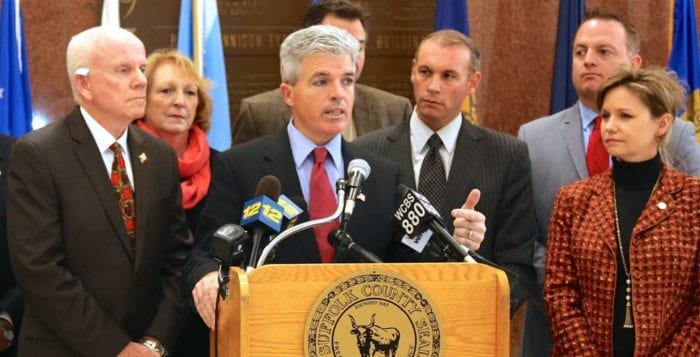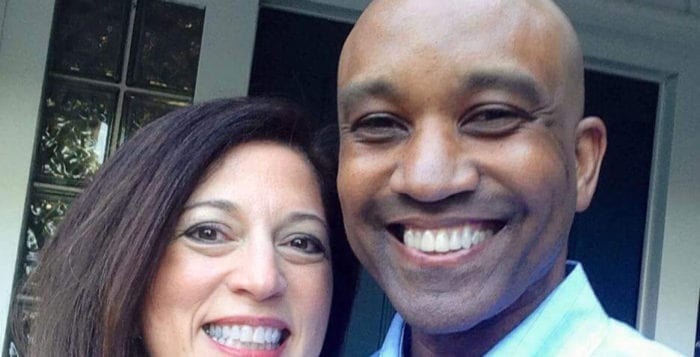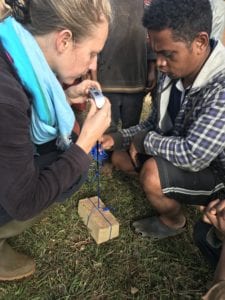By Kevin Redding
An upstate New York legal group that helps residents stand up against improper actions by their government recently set its sights on Suffolk County, whose hike in illegal fees in the past two years is the focus of a class-action lawsuit.
On Oct. 24, the Government Justice Center, an Albany-based nonprofit that offers pro bono representation to New York residents seeking to “fight city hall,” filed a lawsuit in state Supreme Court on behalf of five Suffolk County residents against the county, saying its abundance of assessment fees are “unauthorized taxes.”
The plaintiffs — homeowners living in Melville, Kings Park, Commack, Calverton and Shirley — face increasingly expensive fees for filing real estate documents, namely tax map verifications, which raked in $66 million this year, that far surpass the county’s operating budget of $1.2 million to perform the transactions through its Real Property Tax Service Agency, the suit alleges.
Between 2015 and 2017, mortgage recording fees and tax map verification fees imposed by the county jumped from $60 to $200 per land parcel, with an additional $300 slapped on for every mortgage recording instrument used. The revenue from the fees contributes to the county’s general fund.
According to the complaint, the county passed legislation to enforce these “backdoor taxes” on a certain subset of residents — in this case, homeowners — to bear the county’s burden as it was “unwilling to rein in its spending or face the political consequences of raising taxes to pay for general fund expenses.”
But, under state law, local fees are not allowed to exceed the cost of service or be used
to offset the revenue of government functions.
The homeowners are now calling on the county to stop imposing the illegal fees or at least reduce them to more closely match the $1.2 million service cost, and to refund them a portion of the real estate document fees. The county is currently being subpoenaed.
“It’s important that residents get the opportunity to have their voices heard,” said Cameron MacDonald, the executive director of the GJC. “The county is not supposed to be raising revenue through unauthorized taxes in the form of excessive fees. They need to either pass a tax that affects everyone or cut its spending.”
Ahead of the Suffolk County Legislature’s budget vote for 2018, which passed Nov. 8, MacDonald said he and his group called on legislators, to no avail, to eliminate a total $102 million in fees that generate revenue above the cost of the departments that collect them.
Mike Armstrong, the director of field operations for Reclaim New York Initiative, a nonpartisan group with representation on the GJC’s board which launched the Fight the Fees campaign to end illegal fees across the state, has been active in gaining public support of the lawsuit.
Armstrong compared the gradual increase of fees on taxpayers to “the difference between getting small cuts on your arm to having it chopped off entirely.
“The county talks about wanting to keep people here while they’re pushing them out the door with fees and taxes,” Armstrong said, adding that while tax increases are never popular, it’s at least honest compared to these fees. “I feel bad for young couples who want to buy a house that are now paying that mortgage fee. I feel bad for senior citizens who are closing out their mortgages and then are faced with an exorbitant fee. It’s an issue that’s impacting people in a really dramatic way.”
During a vote last December to adopt the 2017 county budget, Presiding Officer DuWayne Gregory (D-Amityville) defended the fee increases, saying residents will not leave Suffolk County because of a few additional hundreds of dollars.
“I don’t think anyone is going to move to Florida, Virginia, North Carolina, Arizona or anywhere else because of $300,” Gregory said regarding the verification fee. “I think it’s going to cost more to relocate than the
increase in this fee.”
Among few voices of opposition on the Legislature is Rob Trotta (R-Fort Salonga), who, during the meeting to adopt the 2017 county budget, called it “death by a thousand knives.” He warned of an inevitable deficit in the county’s budget.
“The mismanagement of Suffolk County is heading us down the path of bankruptcy,” Trotta said. “They’re going to lose the lawsuits and they’re going to have to refund the fees and stop spending money. There’s going to be a huge hole in the budget no matter what.”
Jason Elan, a spokesman for County Executive Steve Bellone (D), addressed the lawsuit in an emailed statement.
“This is a politically motivated lawsuit filed by Albany insiders who lack any understanding on how government costs are apportioned, yet have no problem saddling taxpayers with the cost of fighting this completely frivolous complaint,” Elan’s statement read.
The state supreme court has since ruled similar fees in Nassau unconstitutional.
“This is a major victory for taxpayers, homeowners, businesses and any New Yorker who has been forced to pay an illegal fee,” Reclaim New York said in an email. “Every government around the state should get the message loud and clear. Nassau and Suffolk legislators have knowingly been stealing from residents with illegal fees — it’s theft. It is time to end illegal fees across New York.”
































